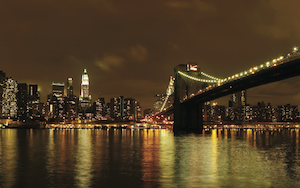Bodenheimer says: “Not everybody wants to get clobbered on three cocktails when they go out. We’re seeing people using significantly more fortified wines: madeira, marsala, sherry, new vermouths.”
Sherry is particularly popular, providing a lot of flavour at a lower abv (and, often, price point) than many base spirits. It’s also versatile, from bone-dry fino and manzanilla to Pedro Ximenez that can be used as a sweetener in place of a liqueur.
Ingredient-led mixology
Over the past decade it seems every pre-Prohibition cocktail has been unearthed and celebrated, but now bartenders aren’t so stuck in the past. The classic cocktail formats are certainly still being used, but the flavours are changing.
Schick says: “The veneration of the classics is starting to go a little bit, but the understanding of why we all love them is starting to come up – that we like a Sazerac not because it’s steeped in history but because it’s simple and perfect and delicious.”
Most of the old-style spirits needed to recreate the classics, such as genever and rye whiskey, are now readily available in the US.
In addition to more mixology-friendly base spirits (including navy-strength gins and smokey mezcals), there are all sorts of interesting liqueurs coming to the market in flavours such as melon and tree bark and aloe. Rather than bartenders leading their cocktail development with history, they’re able to lead with interesting flavours and products used in those classic formats.
Bodenheimer sums it up. “Now we have amazing bar tools, spirits, every flavour of bitters. So the trend is to use these to make great drinks with great products. We’ve see the pendulum swinging back the other way toward simplicity, which I, for one, welcome,” he says.
The whole package
Tiki drinks such as those served at Chicago’s Three Dots and a Dash and San Francisco’s Smuggler’s Cove have spread to other bars in recent years. It has become common for there to be one or two tiki
drinks (in format, but not necessarily made with rum) on top cocktail bar menus, often served in a ceramic mug or with a mountain of crushed ice or other fun garnish.
Martin Cate, owner of Smuggler’s Cove, says: “It’s wonderful to see exotic cocktails taking their place alongside the classics in top bars. They are a vitally important part of the American drinks canon, and their inclusion reflects not only on the respect they have earned, but also the desire of operators to serve their guests something more playful.”
Other playful or casual accents at American bars include fun menus such as Trick Dog’s Chinese restaurant menu and Dead Rabbit’s graphic novel-style book. The new drink list at San Francisco’s Trick Dog is designed like a Chinese restaurant menu with pictures of the drinks and numbers rather than names.
More energetic music, better beer and wine programmes, and much faster cocktail preparation are also at play. American bars have become very good at speeding-up service without compromising on quality, using tricks such as partial batching of drink ingredients, putting cocktails on tap and preparing house-made bottled cocktails before opening.
Schick says: “A lot of people are thinking more holistically about the whole bar experience, especially now that bartenders are just better at making good drinks: Now sourcing isn’t such an issue – you can get the products. And you can get the staff who are well-trained even before you open.
“So it frees you up to work on these other aspects of the experience. I think more bars are getting focused on a more complete aesthetic.”
Sean Kenyon of Williams & Graham agrees: “The super-serious cocktail bar was necessary because it raised the level of knowledge, of technique, all of that. I do love the more casual-style bar with great cocktails, and cocktail people being complete beverage professionals, knowing their wine and beer; a broader focus.
I think that’s really where we’re all going.




